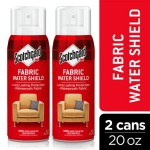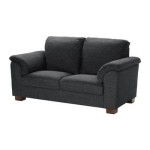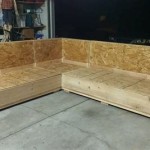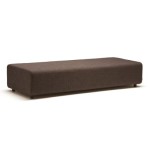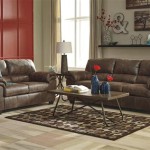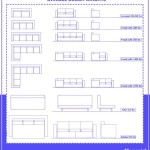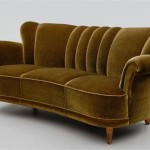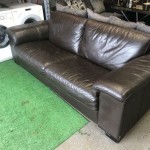The Enduring Appeal of Moroccan Sofa Furniture
Moroccan sofa furniture stands as a testament to a rich cultural heritage, seamlessly blending aesthetics with functionality. Characterized by vibrant colors, intricate designs, and a focus on comfort, these sofas have become increasingly popular beyond the borders of Morocco, finding their place in diverse interior design styles. Understanding the key elements and construction techniques of Moroccan sofas is crucial for appreciating their unique appeal and making informed purchasing decisions.
The allure of Moroccan sofas lies not only in their visually striking presence but also in their ability to create a warm and inviting atmosphere. They often serve as focal points within a room, drawing attention with their unique textures and patterns. The incorporation of traditional Moroccan craftsmanship, passed down through generations, ensures that each piece carries a story and a sense of authenticity.
The construction of a Moroccan sofa often involves a combination of solid wood frames, plush cushions, and elaborate upholstery. The choice of materials reflects the Moroccan landscape and its resources, with woods like cedar and olive often used for framing, and fabrics like silk, cotton, and velvet providing a luxurious feel. The artistry of metalwork and woodwork adds further embellishments, contributing to the overall opulence of the furniture.
Key Elements Defining Moroccan Sofa Design
Several distinct elements contribute to the unique aesthetic of Moroccan sofa furniture. These elements are deeply rooted in Moroccan art and design and are crucial for distinguishing authentic pieces from imitations.
One defining feature is the use of vibrant colors. Deep reds, rich blues, earthy browns, and vibrant greens dominate the palette, often inspired by the natural landscapes of Morocco. These colors are not merely applied as standalone shades but are often interwoven in intricate patterns and motifs, creating a visually stimulating and dynamic effect.
Geometric patterns are another hallmark of Moroccan design, commonly seen in the upholstery and woodwork of sofas. These patterns draw inspiration from Islamic art and architecture, often featuring complex arrangements of stars, polygons, and interwoven lines. The precision and symmetry of these geometric designs reflect a dedication to craftsmanship and a deep understanding of mathematical principles.
Textural richness plays a significant role in defining the overall feel of a Moroccan sofa. The combination of different fabrics, such as smooth silk and textured velvet, creates a tactile experience that enhances the visual appeal. The incorporation of hand-stitched embroidery, intricate beadwork, and decorative tassels further adds to the textural complexity and visual interest.
Materials and Construction Techniques
The durability and longevity of Moroccan sofa furniture depend heavily on the quality of materials used and the craftsmanship involved in its construction. Traditional techniques, passed down through generations of artisans, contribute to the unique character and stability of these sofas.
Solid wood frames form the foundation of most Moroccan sofas. These frames are typically constructed from durable hardwoods, such as cedar, olive, or walnut, chosen for their strength and resistance to warping. The wood is often carefully selected and seasoned to ensure its stability over time. Traditional joinery techniques, such as mortise and tenon joints, are employed to create strong and lasting connections between the frame components.
Cushioning plays a crucial role in the comfort of a Moroccan sofa. Traditionally, cushions are filled with natural materials such as cotton, wool, or feathers, providing a plush and supportive seating experience. Modern variations may incorporate foam padding for added comfort and durability. The density and construction of the cushions are carefully considered to ensure optimal support and longevity.
Upholstery is where the artistry and visual appeal of Moroccan sofas truly shine. Fabrics are chosen for their quality, color, and texture, often reflecting the rich cultural heritage of Morocco. Traditional fabrics like silk, cotton, and velvet are commonly used, adorned with intricate embroidery, beadwork, and appliqué designs. The upholstery process itself is a labor-intensive undertaking, requiring skilled artisans to carefully sew and attach the fabric to the frame and cushions, ensuring a seamless and visually stunning result.
Integrating Moroccan Sofas into Interior Design
Moroccan sofas can be incorporated into a variety of interior design styles, adding a touch of exotic elegance and cultural richness. Their versatility allows them to complement both traditional and contemporary settings, creating a unique and personalized ambiance.
In traditional Moroccan-inspired interiors, sofas are often paired with other elements of Moroccan design, such as ornate coffee tables, intricately patterned rugs, and decorative lamps. This creates a cohesive and immersive atmosphere, transporting occupants to the heart of Moroccan culture. The use of rich colors, natural materials, and intricate details further enhances the authenticity of the space.
In contemporary settings, a Moroccan sofa can serve as a statement piece, adding a touch of bohemian flair to a minimalist or modern aesthetic. The vibrant colors and intricate patterns of the sofa can provide a striking contrast to the clean lines and simple forms of contemporary furniture. Pairing the sofa with neutral-colored walls and minimalist accessories allows it to truly stand out and become the focal point of the room. Combining it with modern furniture can also create an eclectic blend.
Consider the overall color palette of the room when integrating a Moroccan sofa into the design. While Moroccan sofas are often characterized by bold colors, it is important to ensure that these colors complement the existing scheme. A balanced approach can create a cohesive and harmonious aesthetic, while clashing colors can create a jarring and unpleasant effect. Using the color wheel as a guide helps choose complementary or analogous colors that work well together.
The size and scale of the sofa should also be carefully considered in relation to the dimensions of the room. A large and ornate sofa may overwhelm a small space, while a smaller sofa may get lost in a larger room. Measure the space carefully and choose a sofa that is proportional to the room's dimensions, ensuring that it fits comfortably and does not impede traffic flow. A sectional sofa may be suitable for larger rooms, while a smaller loveseat might be ideal for smaller apartments.
Accessorizing around the sofa can further enhance its visual appeal and integrate it seamlessly into the overall design. Throw pillows in complementary colors and patterns can add an extra layer of comfort and visual interest. A decorative rug placed beneath the sofa can ground the space and tie together the various elements of the room. Wall art and lighting fixtures that complement the sofa's design can further enhance the overall aesthetic and create a cohesive and inviting atmosphere.
Beyond aesthetics, consider the practical aspects of integrating a Moroccan sofa into the home. Think about how the sofa will be used and choose materials that are appropriate for the intended purpose. For example, if the sofa will be used frequently by children or pets, opt for durable and easy-to-clean fabrics. Consider the comfort level of the cushions and choose a sofa that provides adequate support for extended periods of sitting. A well-chosen and properly maintained Moroccan sofa can become a cherished piece of furniture for years to come.
The enduring appeal of Moroccan sofa furniture stems from its combination of beauty, functionality, and cultural significance. Whether incorporated into a traditional Moroccan-inspired interior or a modern and minimalist setting, these sofas have the power to transform a space and create a warm and inviting atmosphere. Their distinct style brings a sense of history and culture.

Guide To Moroccan Furniture Morocco Travel

Guide To Moroccan Furniture Morocco Travel

Guide To Moroccan Furniture Planet Marrakech

Moroccan Sofas Sofa Photos Decor Living Room Furniture

Eclectic Moroccan Upholstered Fabric Couch Furniture

Moroccan Sofas Sofa Bed Day Decor Furniture

Moroccan Sofa Sets

Moroccan Style Sofa In Reclaimed Wood Eclectic Living Room Los Angeles By Tara Design Houzz

Morocco Corner Sofa Set Turkey Classic Furniture Luxury Models

Orange Tangier Sofa

